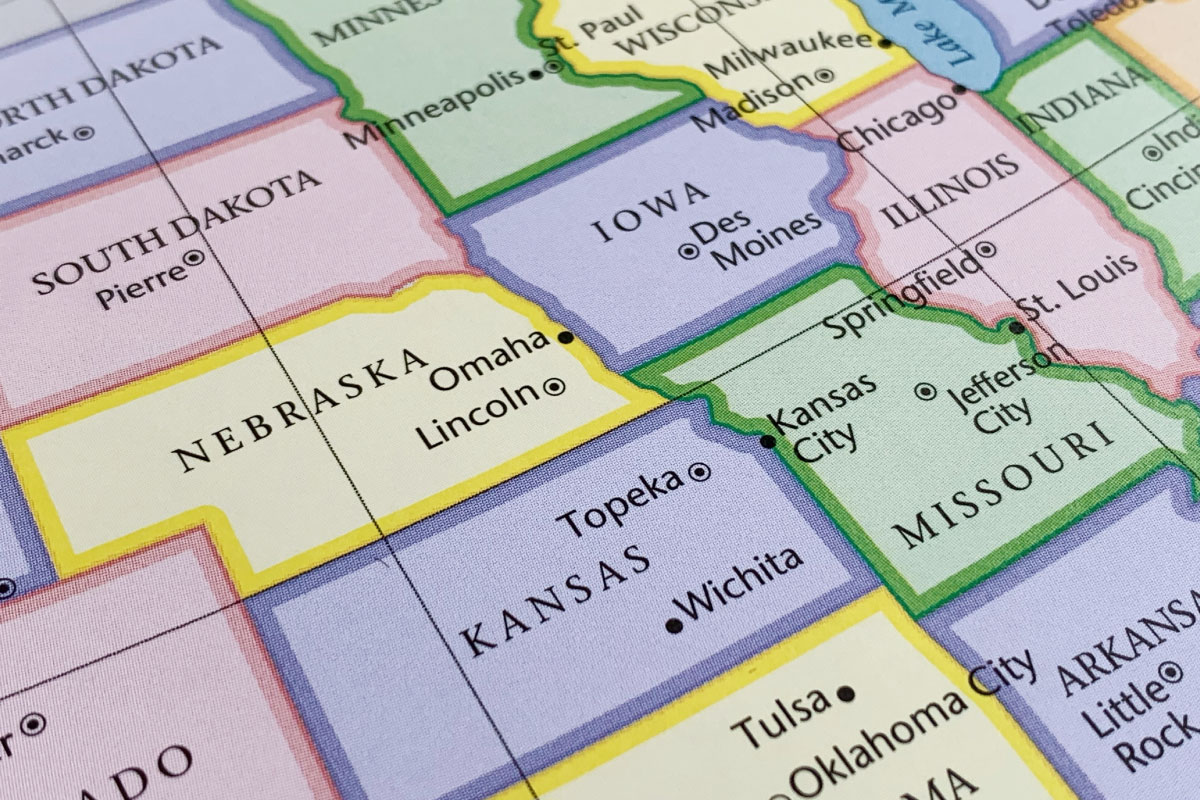If you are a small business owner who sells online to customers in the US or have an ecommerce store and sell to customers in the US, you need to file sales tax returns to report the sales tax you collected and remitted to the states where you have sales tax nexus.
Sales Tax Filing Deadline and Frequency for Each State in the US in 2024
Sales tax filing due dates and frequency vary by state and depend on factors such as your sales volume, tax liability, and business type. Some states require you to file monthly, quarterly, or annually, while others assign you a filing frequency based on your previous tax history. Some states also offer discounts or penalties for filing early or late, respectively.
In this blog post, we will provide you with a summary of the sales tax filing due dates and frequency for each state in the US in 2024, as well as the links to the relevant websites and forms where you can file your sales tax returns. Please note that the due dates and frequency may change over time, so you should always check with the state’s tax authority for the most updated information.
State monthly sales tax filing due dates and frequency
Monthly sales tax filing means that you need to file a sales tax return every month, usually by the 20th day of the following month. For example, if you file monthly, your January sales tax return is due by February 20th. Monthly filing is typically required for businesses that have a high sales volume or tax liability in a state.
The following states require monthly sales tax filing for all or most businesses in 2024:
- Arizona: Due by the 20th day of the following month.
- California: Due by the last day of the following month.
- Colorado: Due by the 20th day of the following month.
- Florida: Due by the 20th day of the following month.
- Georgia: Due by the 20th day of the following month.
- Hawaii: Due by the 20th day of the following month.
- Illinois: Due by the 20th day of the following month.
- Indiana: Due by the 30th day of the following month.
- Kansas: Due by the 25th day of the following month.
- Kentucky: Due by the 20th day of the following month.
- Louisiana: Due by the 20th day of the following month
- Maine: Due by the 15th day of the following month.
- Maryland: Due by the 20th day of the following month.
- Massachusetts: Due by the 20th day of the following month.
- Michigan: Due by the 20th day of the following month.
- Minnesota: Due by the 20th day of the following month.
- Mississippi: Due by the 20th day of the following month.
- Missouri: Due by the 20th day of the following month.
- Nebraska: Due by the 20th day of the following month.
- Nevada: Due by the last day of the following month.
- New Jersey: Due by the 20th day of the following month.
- New Mexico: Due by the 25th day of the following month.
- New York: Due by the 20th day of the following month.
- North Carolina: Due by the 20th day of the following month.
- North Dakota: Due by the last day of the following month.
- Ohio: Due by the 23rd day of the following month.
- Oklahoma: Due by the 20th day of the following month.
- Pennsylvania: Due by the 20th day of the following month. Source
- Rhode Island: Due by the 20th day of the following month
- South Carolina: Due by the 20th day of the following month.
- South Dakota: Due by the 20th day of the following month.
- Tennessee: Due by the 20th day of the following month.
- Texas: Due by the 20th day of the following month.
Annual sales tax filing due dates and frequency
Annual sales tax filing means that you need to file a sales tax return once a year, usually by January 20th of the following year. For example, if you file annually, your 2024 sales tax return is due by January 20th, 2025. Annual filing is typically required for businesses that have a low sales volume or tax liability in a state.
The following states require annual sales tax filing for some or all businesses in 2024:
- Alaska: Due by January 31st of the following year.
- Delaware: No sales tax
- Montana: Due by January 31st of the following year.
- New Hampshire: No sales tax
- Oregon: No sales tax
States that assign sales tax filing due dates and frequency based on previous tax history
Some states do not have a fixed sales tax filing schedule for all businesses but rather assign a filing frequency based on your previous tax history. This means that your filing frequency may change over time depending on your sales volume or tax liability in the state. You should always check your account with the state’s tax authority to confirm your current filing frequency and due dates.
The following states assign sales tax filing due dates and frequency based on previous tax history in 2024:
- North Carolina: Monthly, quarterly, or annually, depending on your tax liability. Due by the 20th day of the month following the end of the filing period.
- North Dakota: Monthly, quarterly, or annually, depending on your tax liability. Due by the last day of the month following the end of the filing period.
- Ohio: Monthly, quarterly, or annually, depending on your tax liability. Due by the 23rd day of the month following the end of the filing period.
- Oklahoma: Monthly, quarterly, or annually, depending on your tax liability. Due by the 20th day of the month following the end of the filing period.
- Pennsylvania: Monthly, quarterly, or annually, depending on your tax liability. Due by the 20th day of the month following the end of the filing period.
- Tennessee: Monthly, quarterly, or annually, depending on your tax liability. Due by the 20th day of the month following the end of the filing period.
- Texas: Monthly, quarterly, or annually, depending on your tax liability. Due by the 20th day of the month following the end of the filing period.
- Utah: Monthly, quarterly, or annually, depending on your tax liability. Due by the last day of the month following the end of the filing period.
- Virginia: Monthly, quarterly, or annually, depending on your tax liability. Due by the 20th day of the month following the end of the filing period.
- West Virginia: Monthly, quarterly, or annually, depending on your tax liability. Due by the 20th day of the month following the end of the filing period.
- Wisconsin: Monthly, quarterly, or annually, depending on your tax liability. Due by the last day of the month following the end of the filing period.
- Wyoming: Monthly, quarterly, or annually, depending on your tax liability. Due by the last day of the month following the end of the filing period.
Sales Tax Filing Frequency
The sales tax filing frequency is determined by the amount of sales tax you collect in each state. Generally, the more sales tax you collect, the more often you have to file and pay. Most states assign you a filing frequency when you register for a sales tax permit, and may change it based on your sales tax history.
There are four common filing frequencies: annual, semiannual, quarterly, and monthly. Some states also have a prepayment option for high-volume sellers who have to make advance payments before the regular due date.
The table below shows the sales tax filing frequency thresholds for each state in 2024. Note that some states may have different criteria or exceptions for certain types of businesses or products.
US State Sales Tax Filing Frequency Guide – 2024
| State | Annual | Semiannual | Quarterly | Monthly | Prepayment |
|---|---|---|---|---|---|
| Alabama | Less than $200 | N/A | $200 – $1,200 | More than $1,200 | N/A |
| Alaska | N/A | N/A | N/A | N/A | N/A |
| Arizona | Less than $2,000 | N/A | $2,000 – $8,000 | More than $8,000 | N/A |
| Arkansas | Less than $2,400 | N/A | $2,400 – $9,600 | More than $9,600 | N/A |
| California | Less than $1,000 | N/A | $1,000 – $10,000 | More than $10,000 | More than $17,000 |
| Colorado | Less than $300 | N/A | $300 – $900 | More than $900 | N/A |
| Connecticut | Less than $1,000 | N/A | $1,000 – $4,000 | More than $4,000 | N/A |
| Delaware | N/A | N/A | N/A | N/A | N/A |
| Florida | Less than $500 | N/A | $500 – $1,200 | More than $1,200 | More than $20,000 |
| Georgia | Less than $200 | N/A | $200 – $1,200 | More than $1,200 | N/A |
| Hawaii | Less than $2,000 | N/A | $2,000 – $4,000 | More than $4,000 | N/A |
| Idaho | Less than $1,000 | N/A | $1,000 – $6,000 | More than $6,000 | N/A |
| Illinois | Less than $1,000 | N/A | $1,000 – $20,000 | More than $20,000 | N/A |
| Indiana | Less than $1,000 | N/A | $1,000 – $7,500 | More than $7,500 | N/A |
| Iowa | Less than $120 | N/A | $120 – $6,000 | More than $6,000 | N/A |
| Kansas | Less than $400 | N/A | $400 – $4,000 | More than $4,000 | N/A |
| Kentucky | Less than $1,200 | N/A | $1,200 – $12,000 | More than $12,000 | N/A |
| Louisiana | Less than $500 | N/A | $500 – $5,000 | More than $5,000 | N/A |
| Maine | Less than $1,200 | N/A | $1,200 – $6,000 | More than $6,000 | N/A |
| Maryland | Less than $750 | N/A | $750 – $3,600 | More than $3,600 | N/A |
| Massachusetts | Less than $100 | N/A | $100 – $1,200 | More than $1,200 | N/A |
| Michigan | Less than $750 | N/A | $750 – $3,600 | More than $3,600 | More than $720,000 |
| Minnesota | Less than $500 | N/A | $500 – $2,500 | More than $2,500 | More than $250,000 |
| Mississippi | Less than $300 | N/A | $300 – $3,000 | More than $3,000 | N/A |
| Missouri | Less than $100 | N/A | $100 – $1,200 | More than $1,200 | N/A |
| Montana | N/A | N/A | N/A | N/A | N/A |
| Nebraska | Less than $900 | N/A | $900 – $3,000 | More than $3,000 | N/A |
| Nevada | Less than $1,200 | N/A | $1,200 – $10,000 | More than $10,000 | N/A |
| New Hampshire | N/A | N/A | N/A | N/A | N/A |
| New Jersey | Less than $500 | N/A | $500 – $30,000 | More than $30,000 | N/A |
| New Mexico | Less than $200 | N/A | $200 – $1,200 | More than $1,200 | N/A |
| New York | Less than $300 | N/A | $300 – $3,000 | More than $3,000 | More than $300,000 |
| North Carolina | Less than $100 | N/A | $100 – $1,200 | More than $1,200 | N/A |
| North Dakota | Less than $600 | N/A | $600 – $1,200 | More than $1,200 | N/A |
| Ohio | Less than $1,200 | N/A | $1,200 – $75,000 | More than $75,000 | More than $75,000 |
| Oklahoma | Less than $50 | N/A | $50 – $2,500 | More than $2,500 | N/A |
| Oregon | N/A | N/A | N/A | N/A | N/A |
| Pennsylvania | Less than $600 | N/A | $600 – $6,000 | More than $6,000 | N/A |
| Rhode Island | Less than $200 | N/A | $200 – $1,200 | More than $1,200 | N/A |
| South Carolina | Less than $100 | N/A | $100 – $600 | More than $600 | N/A |
| South Dakota | Less than $500 | N/A | $500 – $1,500 | More than $1,500 | N/A |
| Tennessee | Less than $200 | N/A | $200 – $1,200 | More than $1,200 | N/A |
| Texas | Less than $1,000 | N/A | $1,000 – $50,000 | More than $50,000 | More than $500,000 |
| Utah | Less than $1,000 | N/A | $1,000 – $50,000 | More than $50,000 | N/A |
| Vermont | Less than $500 | N/A | $500 – $2,500 | More than $2,500 | N/A |
| Virginia | Less than $120 | N/A | $120 – $3,600 | More than $3,600 | N/A |
| Washington | Less than $1,000 | N/A | $1,000 – $28,000 | More than $28,000 | More than $28,000 |
| West Virginia | Less than $600 | N/A | $600 – $6,000 | More than $6,000 | N/A |
| Wisconsin | Less than $1,000 | N/A | $1,000 – $3,600 | More than $3,600 | N/A |
| Wyoming | Less than $150 | N/A | $150 – $1,500 | More than $1,500 | N/A |
We hope this blog post has helped you understand the sales tax filing due dates and frequency for each state in the US in 2024. If you have any questions or need help with your sales tax compliance, please contact us at AtomicTax.



